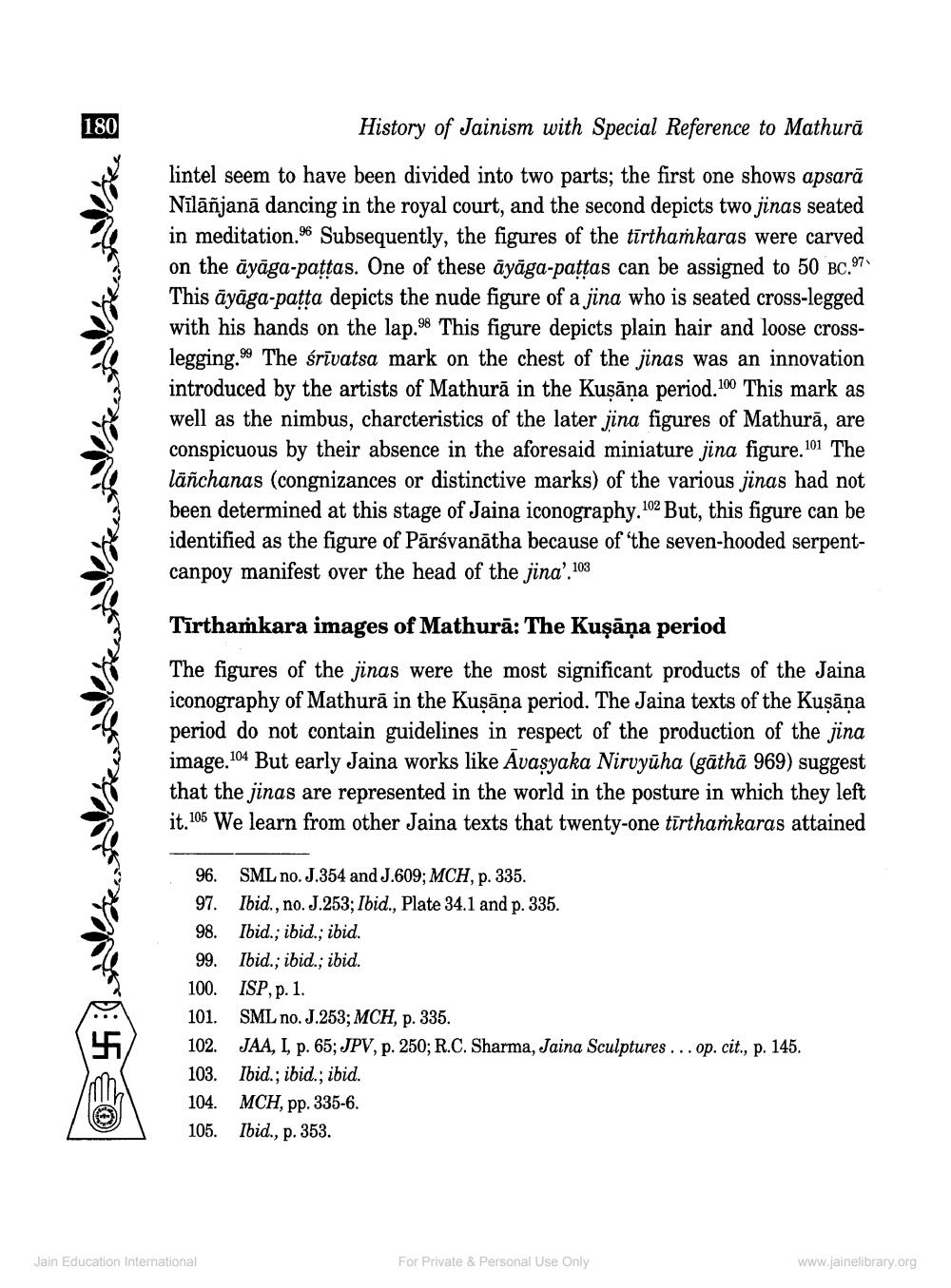________________
History of Jainism with Special Reference to Mathurā
lintel seem to have been divided into two parts; the first one shows apsarā Nīlāñjanā dancing in the royal court, and the second depicts two jinas seated in meditation. Subsequently, the figures of the tīrthařkaras were carved on the āyāga-pattas. One of these āyāga-pattas can be assigned to 50 BC.971 This āyāga-patta depicts the nude figure of a jina who is seated cross-legged with his hands on the lap.98 This figure depicts plain hair and loose crosslegging.99 The śrīvatsa mark on the chest of the jinas was an innovation introduced by the artists of Mathurā in the Kuşāņa period. 100 This mark as well as the nimbus, charcteristics of the later jina figures of Mathurā, are conspicuous by their absence in the aforesaid miniature jina figure.101 The lāñchanas (congnizances or distinctive marks) of the various jinas had not been determined at this stage of Jaina iconography.102 But, this figure can be identified as the figure of Pārsvanātha because of the seven-hooded serpentcanpoy manifest over the head of the jina'.103
Tirthařkara images of Mathurā: The Kuşāņa period
The figures of the jinas were the most significant products of the Jaina iconography of Mathurā in the Kuşāņa period. The Jaina texts of the Kuşāņa period do not contain guidelines in respect of the production of the jina image.104 But early Jaina works like Āvaşyaka Nirvyūha (gāthā 969) suggest that the jinas are represented in the world in the posture in which they left it.105 We learn from other Jaina texts that twenty-one tīrthařkaras attained
96. SML no. J.354 and J.609; MCH, p. 335. 97. Ibid., no. J.253; Ibid., Plate 34.1 and p. 335. 98. Ibid., ibid.; ibid. 99. Ibid., ibid., ibid. 100. ISP,p.1. 101. SML no. J.253; MCH, p. 335. 102. JAA, I, p. 65; JPV, p. 250; R.C. Sharma, Jaina Sculptures ... op. cit., p. 145. 103. Ibid., ibid., ibid. 104. MCH, pp. 335-6. 105. Ibid., p. 353.
Jain Education International
For Private & Personal Use Only
www.jainelibrary.org




